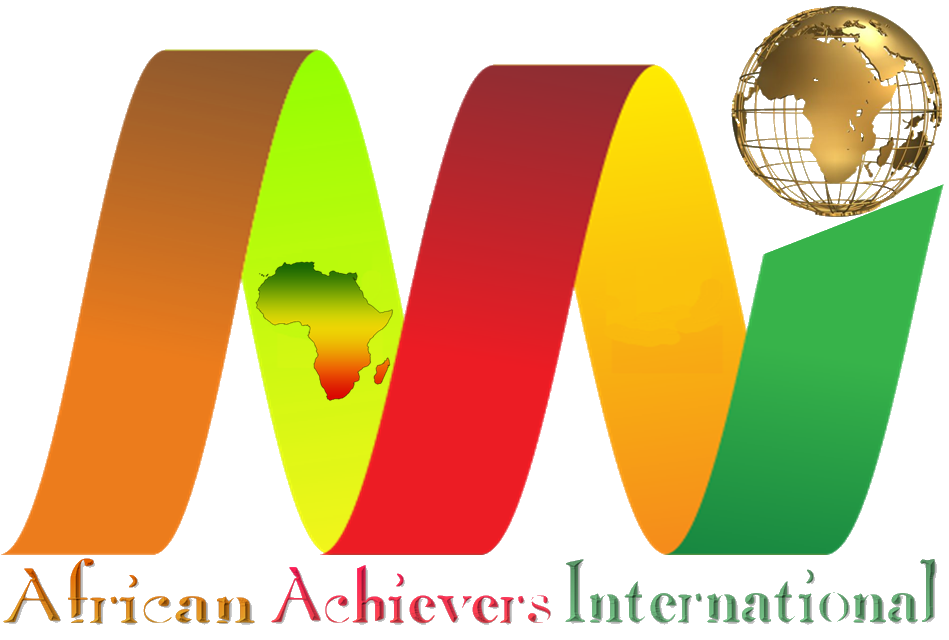AfIA CATEGORIES AND AFRICAN GRASSROOTS SOCIAL PROBLEMS
AfIA Awards have and will always exist to recognize the most impactful achievements made by social good organizations in the grassroots of Africa and around the world. In order to truly understand what makes an organization impactful, we always have to go that extra mile to find who are making a difference.
To determine the award categories, we have refined the categories focussing full on the largest social issues facing the global community. By understanding these global issues it will allow us to clearly recognize the scale of problems being addressed by the different organisation’s programs, and then understand their development towards solving those issues.

POVERTY & HUNGER RELIEF
Poverty & Hunger Relief programs address the root of nearly all global problems: financial insecurity. These programs provide food security, agricultural education and development, employment training and opportunity, critical infrastructure and livelihood development.
CRITICAL INFRASTRUCTURE
Critical Infrastructure programs look at the physical needs of a community and work to increase access to electricity, water, communication systems, transportation and housing.
-
Lack of Access to water -
Lack of Agricultural Land -
Lack of Communication Systems -
Lack of Electricity -
Lack of Housing and Shelter -
Lack of Transportation Options -
Lack of Waste Management Systems -
Other
ECONOMIC DEVELOPMENT & JOB READINESS
From employment opportunities to job training and micro financing, Economic Development programs help individuals provide a better life for their families and raise the bar in self-sustainability.
-
Lack of Available Financing -
Lack of Job Training -
Lack of Professional Readiness -
Unemployment -
Other
FOOD SECURITY & RESPONSE
At their core, Food Security & Response programs help to relieve hunger. By addressing everything from a lack of key agricultural infrastructure, these programs realize that people need access to food as well as the tools to produce their own.
-
Lack of Access to Food -
Lack of Agricultural Production -
Poor Environmental Conditions -
Other
LIVELIHOOD DEVELOPMENT
Livelihood Development programs work to educate developing countries about the importance of sanitation, sexual education and hygiene.
-
Dangerous or Expensive Cooking Practices -
Lack of Sanitation & Hygiene -
Lack of Sexual Education -
Lack of Transportation Options -
Lack of Women’s Wellness -
Poor Farming Practices -
Other

EDUCATION ADVANCEMENT
Educational Advancement programs address problems facing academic circles in the Africa, and the global community at large. Identified are the three major social issues that the education sector faces: Preparedness and Enrolment, Quality of Education & Completion, and Extracurricular & Skill Development.
EDUCATION PREPAREDNESS & ENROLMENT
Education Preparedness & Enrolment programs are primarily focused on getting students ready for and into a school system. These programs address, among others, the general lack of access to education, low enrolment or literacy rates, the poor or unsafe conditions of school buildings or classrooms, and areas that have little to no foundation for early learning.
-
Lack of Access to Schools or Classrooms -
Lack of Learning Materials -
Low Attendance Rate -
Low Enrolment Rates -
Low Literacy Rates -
Poor Conditions of Classrooms and Schools -
Unaffordable Costs -
Weak Foundation for Early Learning -
Other
EXTRACURRICULAR & SKILL DEVELOPMENT
Skill Development programs are focused beyond the classroom often developed for afterschool or mentorship programs. They address problems that pertain to at-risk youth, reduced funding for art education, a lack of social or leadership skills and unhealthy behaviours.
-
At Risk Youth -
Lack of Art Education Programs -
Lack of Cultural Appreciation -
Lack of Music Programs -
Lack of Playgrounds -
Lack of Social or Leadership Skills -
Lack of Supervision and Guidance -
Lack of Theatre Programs -
Lack of Vocational Training -
Reduced Funding for Art Education -
Unhealthy Behaviours -
Other
QUALITY OF EDUCATION & COMPLETION
The Quality of Education programs are primarily focused on keeping students in school and ensuring a high quality of education. These programs address, among others, problems pertaining to the achievement gap, high dropout rates, lack of individual education plans, low test scores, poor Further Education/college readiness, a shortage of qualified teachers and uneven access to information and communication technologies.
-
Achievement Gap -
High Dropout Rate -
Lack of Inclusion Training -
Lack of Individual Education Plan -
Lack of Learning Materials -
Lack of Progressive Education -
Low Graduation Rates -
Low Test Scores -
Outdated Curriculum -
Poor Further Education/College Readiness -
Poor Evaluation Standards (Unfair or Missing) -
Shortage of Qualified Teachers -
Unaffordable Costs -
Uneven Access to ICTechnologies -
Other

HUMAN RIGHTS & SOCIAL JUSTICE SERVICES
Human Rights & Social Justice Services programs are the voice of human rights movements. They fight to end modern-day slavery and require equal treatment and opportunity for all regardless of race, sexual orientation, economic status, disability, age or gender.
WOMEN'S RIGHTS
Women's Rights programs preserve and protect the rights of females in the uniform services, at the doctor’s office, in the community, at home and at work. These programs fight for an end to women trafficked for sex, violence against women and women forced into slavery.
-
Gender Discrimination in Education -
Reproductive Choice -
Gender Discrimination in uniform services -
Gender Discrimination in Employment -
Violence Against Women -
Slavery/ Trafficked -
Stigma -
Lack of Access to Power/Leadership -
Other
WOMEN'S RIGHTS
Women's Rights programs preserve and protect the rights of females in the uniform services, at the doctor’s office, in the community, at home and at work. These programs fight for an end to women trafficked for sex, violence against women and women forced into slavery.
-
Abuse, Neglect & Abandonment -
Bullying -
Deficiencies in Foster Care System -
Exploitation, Prostitution, Trafficking -
High Mortality Rate -
Labour -
Neglect & Abandonment -
Slavery/Trafficked -
Stigma -
Other
WORKERS RIGHTS
Programs that protect the rights of Workers promote workforce development by addressing unfair compensation, discrimination in the workplace, trafficked labourers, skill gap and poor workplace conditions.
-
Discrimination -
Unfair compensation -
Poor Workplace Conditions -
Trafficked -
Skill Gap -
Slavery/Trafficked -
Stigma -
Other
PRISONER & EX-OFFENDER RIGHTS
Prisoner & Ex-Offender Rights programs address the population of people that have been sentenced to time in jail. Working to lower the recidivism rate by protecting their rights to education, safety, and economic opportunity, these programs address issues of juvenile justice, inmate abuse and lack of transitional support for inmates.
-
Capital Punishment -
Discrimination in Employment -
Excessive Punishments -
Inhumane & Unsafe Prison Conditions -
Inmate Abuse -
Juvenile Justice -
Lack of Access to Legal Representation -
Lack of Transitional Support -
Lack of Education and Rehabilitation Programs -
Recidivism -
Stigma -
Wrongful Conviction/Imprisonment -
Other
LGBTQ RIGHTS
LGBTQ programs fight for an end to bullying, discrimination, hate crimes, harassment and civil inequality based on sexual orientation.
-
Bullying -
Civil Inequality -
Harassment / Discrimination -
Hate Crimes -
Lack of Access to Adoption & Fertility Services -
Sexual Orientation Discrimination in Employment -
Sexual Orientation Discrimination in Forces
-
Stigma -
Trafficked -
Other

HEALTH SERVICES
Health Services programs address the incredible burden caused by disease. These programs are specifically designed to limit this burden through fundraising for research for a cure, guiding prevention efforts for treatment, assisting those with active disease, or supporting those affected by a loved one’s illness.
CANCER PREVENTION, DIAGNOSIS, TREATMENT, RESEARCH OR MANAGEMENT
Programs aimed at mitigating the effects of Cancer often face challenges unique to this particular disease. These programs provide assistance to those at every stage in their cancer journey, whether by improving disease screening, achieving access for continued care or preventing the disease all together.
-
Breast Cancer -
Colon Cancer -
Lung Cancer -
Lymphoma/Leukaemia Cancer -
Pancreatic Cancer -
Paediatric Cancer -
Prostate Cancer -
Skin Cancer -
Uterine/Ovarian/Cervical Cancer -
Other Cancers
MENTAL HEALTH TREATMENT OR RESEARCH
Mental illness is an often silent, and just as often, stigmatized disease that affects millions of people globally. Mental Health programs seek to minimize the burden of mental illness to the patient, but also serve to minimize the stigma associated with such diseases.
-
Behavioural Disorders -
Depression -
Eating Disorders -
Personality Disorders -
PTSD -
Substance Abuse -
Other
COMMUNICABLE DISEASE PREVENTION, DIAGNOSIS, TREATMENT, RESEARCH OR MANAGEMENT
Communicable Disease programs provide prevention methods, treatment and access to treatment for those suffering from contagious and easily-transmitted diseases like HIV/AIDS, Malaria and Polio. Communicable diseases can be transmitted from animals or the environment to people or from person to person.
-
Cholera -
Hepatitis -
HIV/AIDS -
Influenza -
Malaria -
Ebola -
Measles, Mumps & Rubella -
Polio -
Respiratory Infections (not influenza) -
Sexually Transmitted Infections -
Tuberculosis -
Other
NON-COMMUNICABLE DISEASE PREVENTION, DIAGNOSIS, TREATMENT, RESEARCH OR MANAGEMENT
Non-Communicable Disease programs address non-infectious and often chronic disorders affecting, among others, the heart, kidney, lung, blood, stomach, nervous system and skin. Their services include preventing the disease, achieving early diagnosis of the disease, or improving the management of the disease.
-
Allergies & Immune System Disorders -
Blood Disorders -
Developmental & Genetic Disorders -
Endocrine Disorders -
Heart & Vascular Disorders -
Kidney Disorders -
Lung Disorders -
Nervous System Disorders -
Rheumatologic Disorders -
Skin Disorders -
Stomach & Abdominal Disorders -
Other
PATIENT & FAMILY SERVICES
Patient and Family Services programs ease the hardship associated with disease. They do not address the disease itself, but serve to assist people with the necessary day-to-day activities that become too difficult, such as transportation, morale, food and housing.
-
Communication Challenges -
Financial Strain -
Lack of Residential Options -
Stigma around Health Issues -
Support for Families with Substance Abuse -
Transportation Difficulties -
Other

ENVIRONMENTAL PROTECTION
From forest wildlife to greenbelt and beach preservation to clean air, Environmental Protection programs work to promote, protect and preserve all elements of our planet.
LAND, WILDLIFE & URBANIZATION
Human activity like deforestation, urbanization, unsustainable agricultural practices and landfills threaten the future livelihood of our planet and wildlife. These programs deal specifically with the negative effects brought on by human activity, like deforestation, unsustainable agricultural practices, unsustainable development, displace and injured wildlife, overhunting, poaching, and water crisis.
-
Deforestation -
Displaced and Injured Wildlife -
Endangered Species -
Habitat Degradation -
Invasive Species -
Overhunting/Poaching/Overfishing -
Reckless Population Management -
Threat to Habitat -
Unsustainable Agricultural Practices -
Unsustainable Development -
Urban Runoff -
Waste Pollution -
Water Crisis -
Other
OCEAN, MARINE LIFE & FRESHWATER SYSTEMS
Ocean & Marine Life & Freshwater seek to create clean and sanitary waterways by addressing problems like habitat degradation, invasive species, urban development and water pollution. They work to reduce destructive fishing practices and strategically revive dying coral reefs and ocean dead zones.
-
Destructive Fishing Practices -
Dying Coral Reefs -
Endangered Species -
Habitat Degradation -
Invasive Species -
Urban Development -
Water Pollution -
Other

DISASTER RELIEF & PUBLIC SAFETY
Disaster Relief & Public Safety programs are strategically developed to reduce crime, violence, injury and disaster in rural or urban neighbourhoods. From disaster response and awareness to safe houses and emotional support, these programs use safety as their number one metric.
DISASTER RELIEF & PUBLIC SAFETY
Disaster Relief & Community Safety programs address the problems that plague the global neighbourhood, addressing issues that range from missing persons, unintentional injuries and domestic violence to providing supplies, medical care, food, infrastructure and volunteers to help in the immediate aftermath of a disaster.
-
Accidental Injuries -
Destroyed Homes -
Displacement -
Domestic Violence & Abuse -
Food Insecurity -
Gangs & Gang Violence -
Gun Violence -
Kidnapping -
Lack of Effective Communications System -
Lack of Medical Care -
Lack of Supplies -
Missing Persons -
Operating Under the Influence -
Rape -
Runaways -
Other










